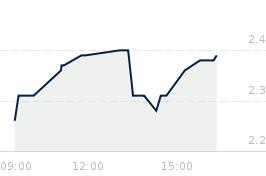Forum
Warto wiedzieć
Twoje Forum
Forum Giełda
+Dodaj wątek
Opublikowano przy kursie:
1,99 zł
, zmiana od tamtej pory:
-0,25%
Re: Zielona transformacja
Zgłoś do moderatoraIn a bid to greatly improve the roll-out of solar power in the next years, Germany’s government has tabled a strategy aimed at simplifying regulation, unlocking new locations, and incentivising investments in the technology. At a press conference after the government's second 'Solar PV-Summit' this year, economy and climate action minister Robert Habeck said the technology will be one of the key power sources of the future and greatly contribute to the goal of a share of 80 percent renewables in Germany’s electricity mix by 2030. Total capacity is planned to then be 215 gigawatts (GW), from about 63 GW in 2022. “We see that the buildout is gaining traction,” Habeck said, adding that the 2023 goal of adding 9 GW capacity could well be surpassed by the end of the year and reach more than 10 GW. In the first three months of this year the solar industry already marked its most busy quarter ever by installing 2.7 GW of new capacity. The expansion target by 2026 is 22 GW per year. “With the strategy we presented today we intend to greatly increase expansion speed once more and remove all brakes that so far have hindered a faster pace,” the Green Party politician added.
Carsten Körnig, head of industry lobby group BSW Solar, said the push by private homeowners in the energy crisis to become more independent regarding electricity supply had greatly helped boost expansion to record levels. Given the challenges arising from inflation and higher interest rates, it would now be necessary to also incentivise corporate users to invest in solar PV installations to uphold the positive trend.
Carsten Körnig, head of industry lobby group BSW Solar, said the push by private homeowners in the energy crisis to become more independent regarding electricity supply had greatly helped boost expansion to record levels. Given the challenges arising from inflation and higher interest rates, it would now be necessary to also incentivise corporate users to invest in solar PV installations to uphold the positive trend.
- Kurs Euro
- Kurs dolar
- Kurs frank
- Kurs funt
- Wiron
- Przelicznik walut
- Kantor internetowy
- Kalkulator wynagrodzeń
- Umowa zlecenie
- Kredyt na mieszkanie
- Kredyt na samochód
- Kalkulator kredytowy
- Revolut
- Winiety
- Jak grać na giełdzie?
- Jak wziąć kredyt hipoteczny?
- Rejestracja samochodu
- Jak rozwiązać umowę z Orange
- Koszty uzyskania przychodów
- Sesje elixir
- PB weekend
- RRSO co to jest?
- Blogbank.pl
- Promocje bankowe - zgarnijpremie.pl
- Stopa procentowa


